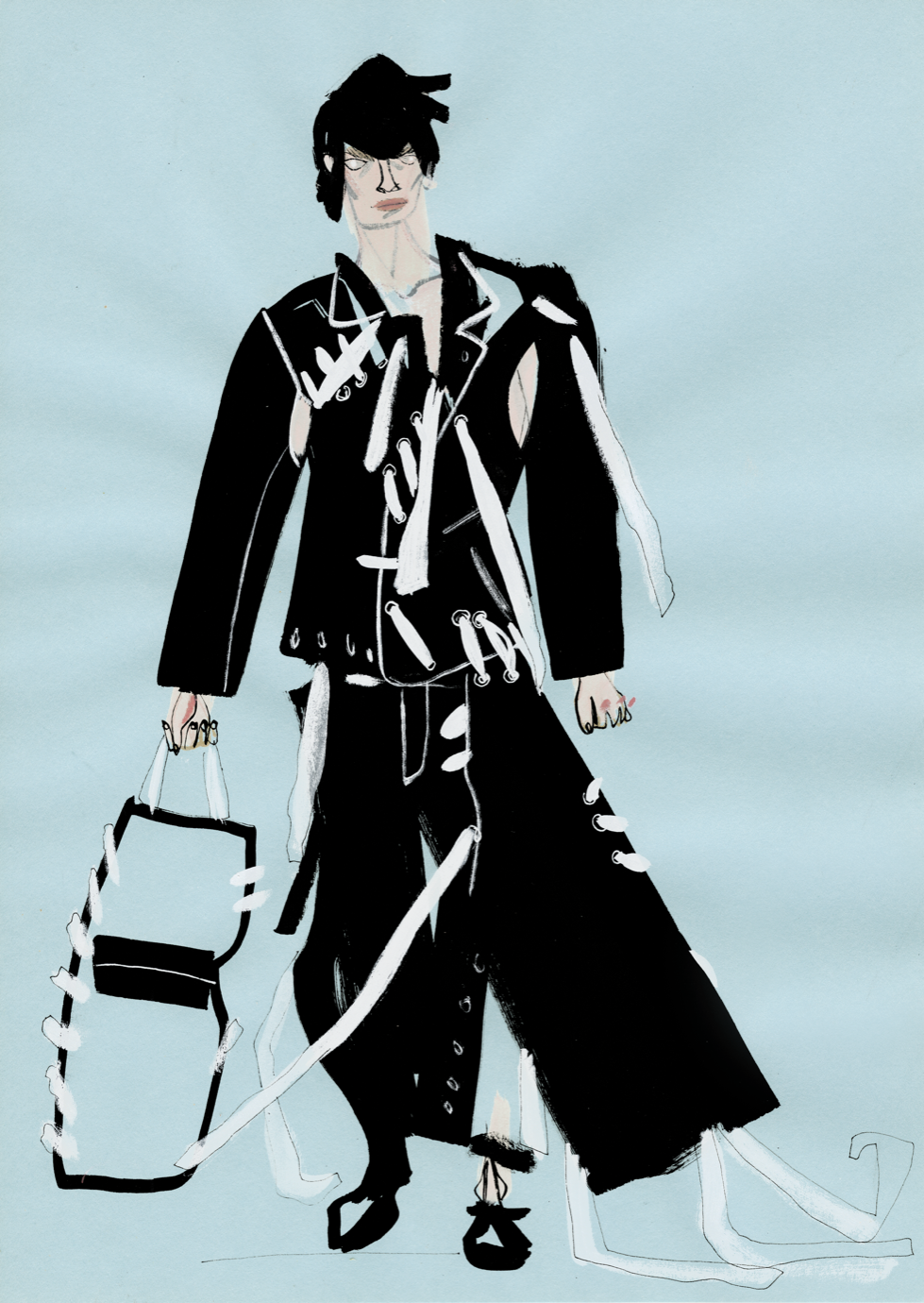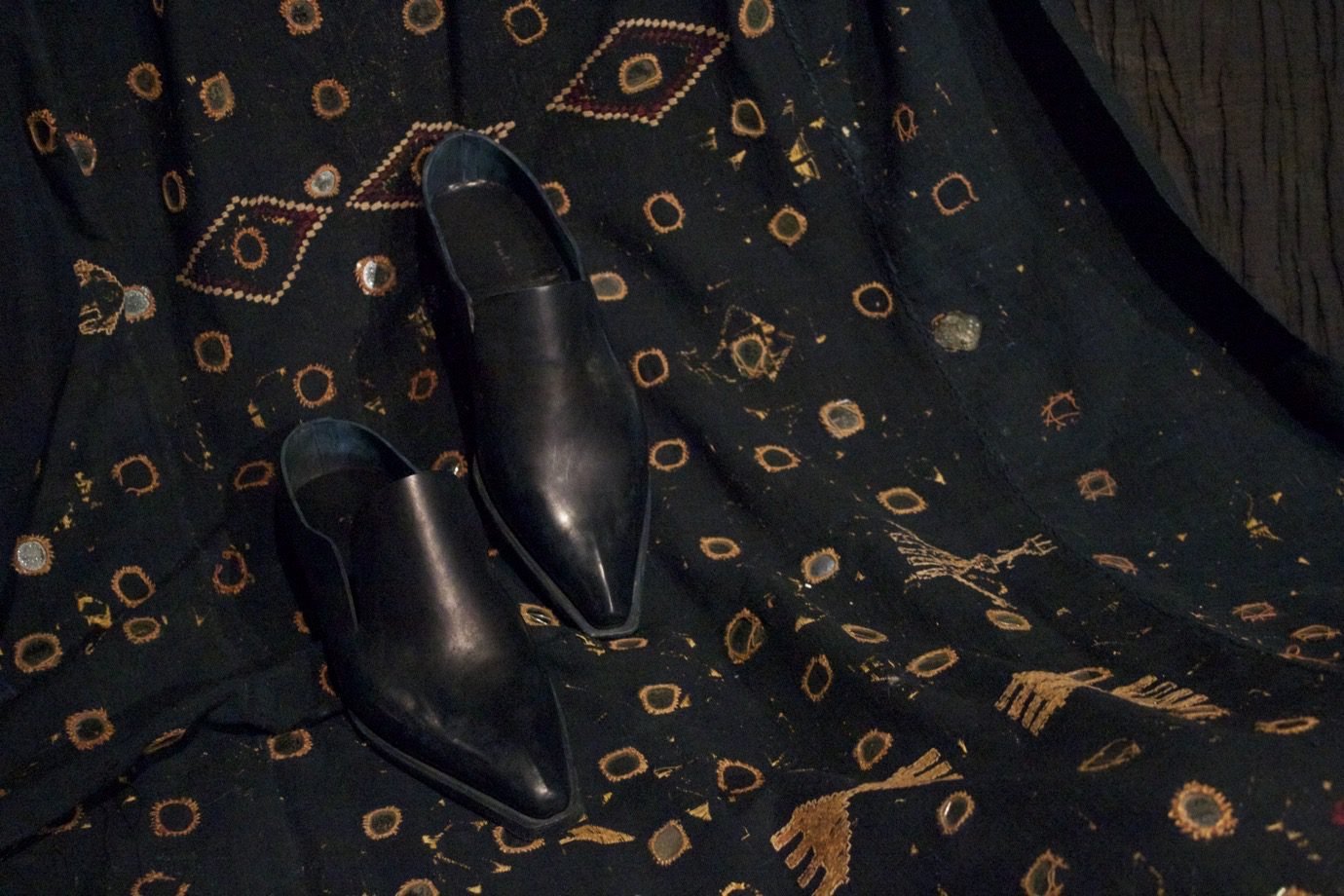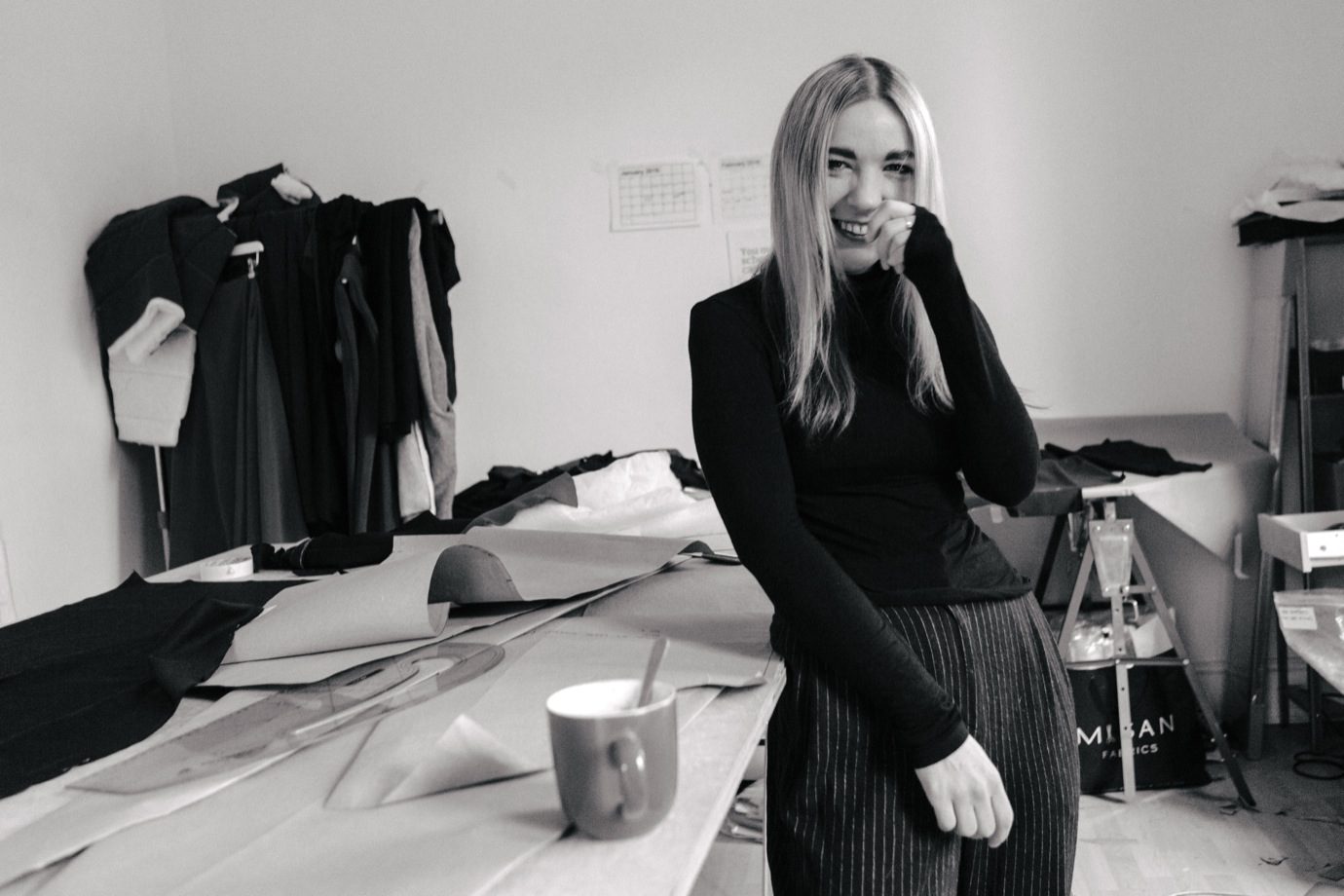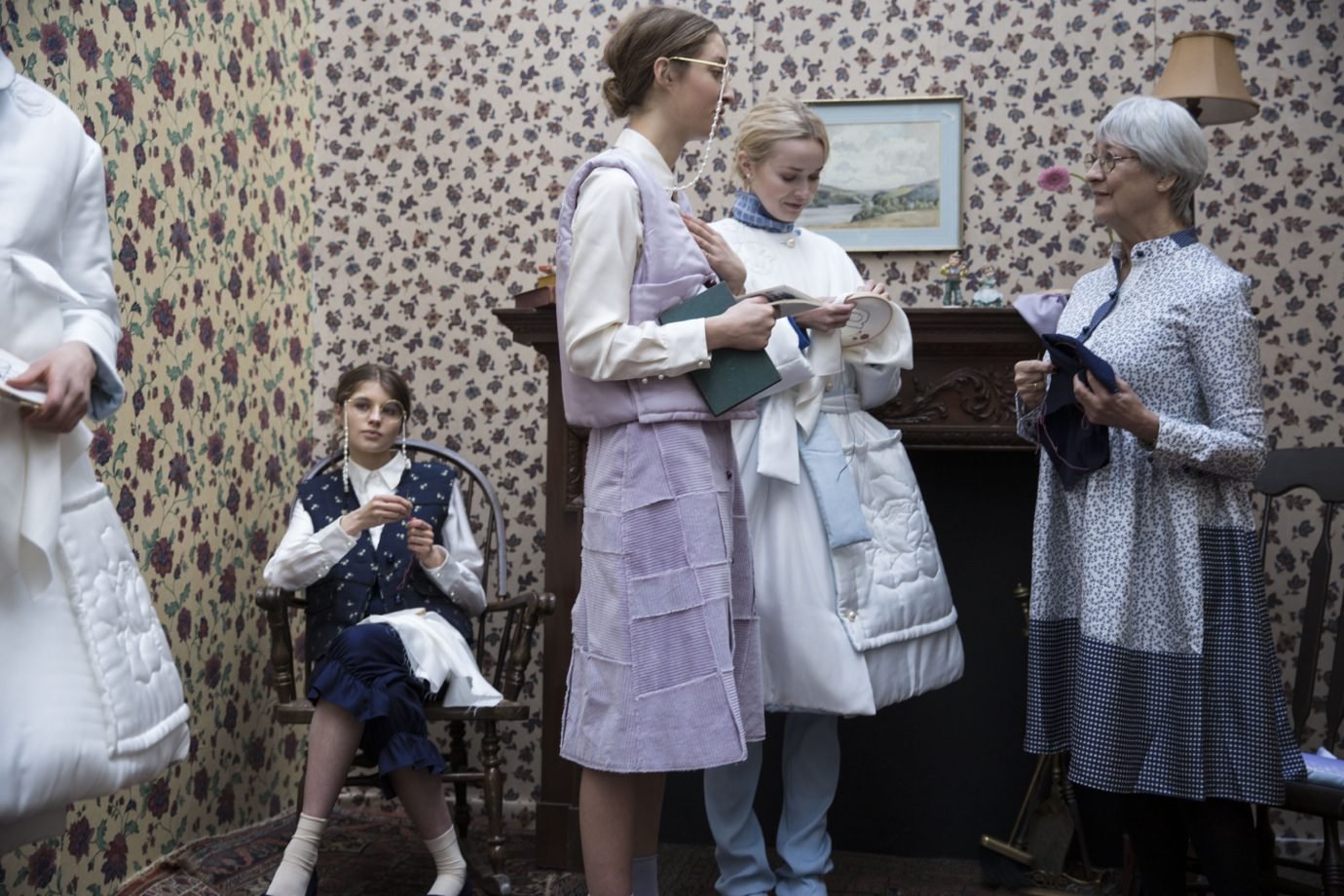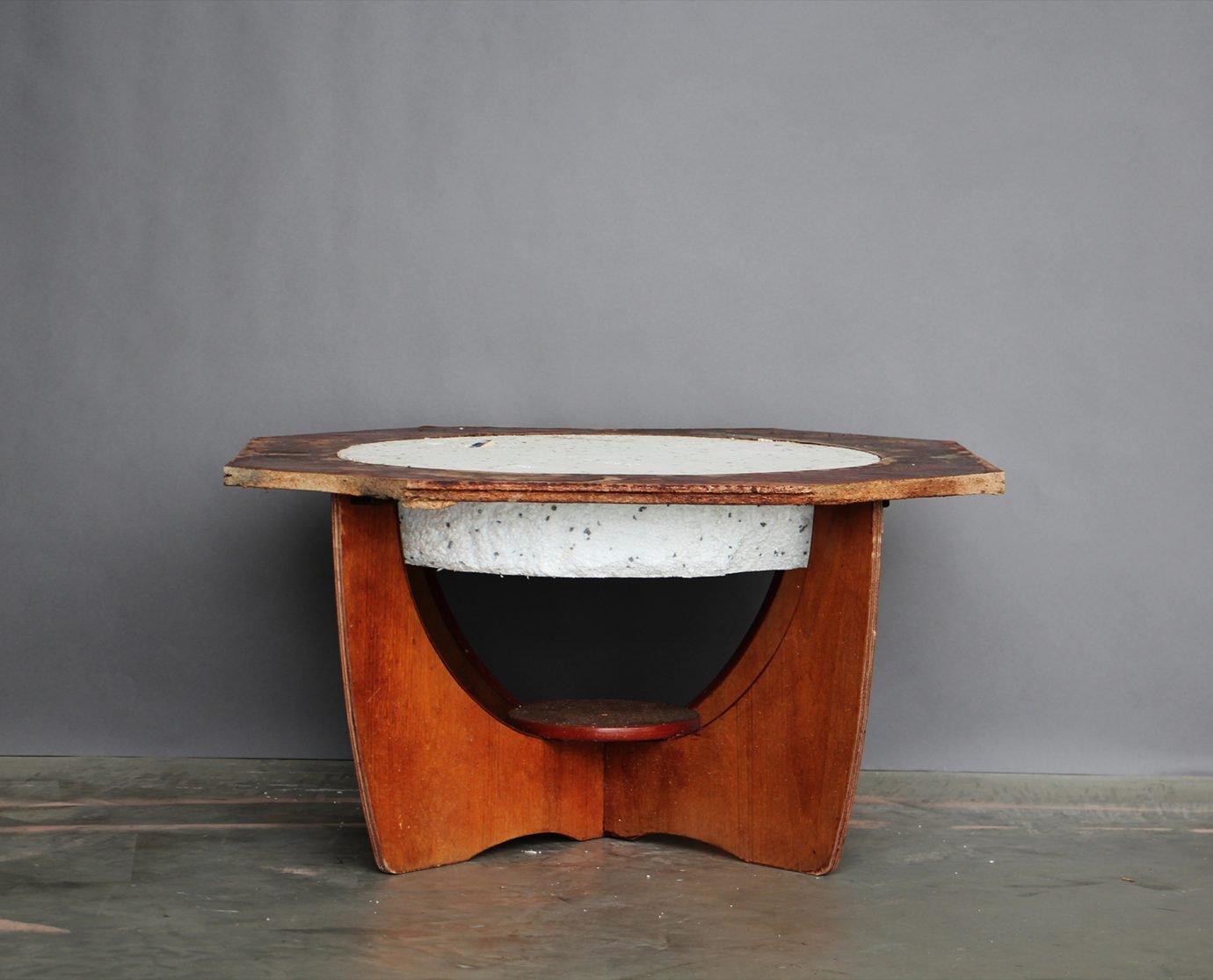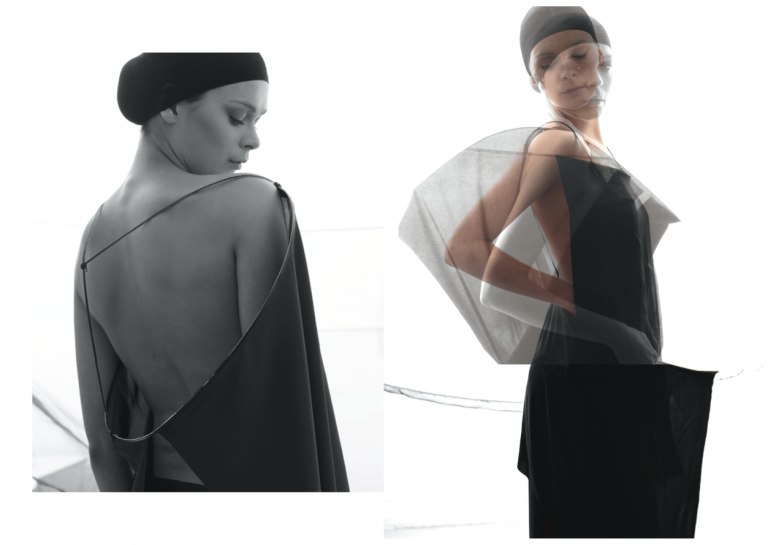WED AW21, The Deep Exhale, was born from a need for lightness and optimism; a positive energy symbolized by the recurring theme of the polka dot. A further exploration of their signature drape and shape, the collection goes beyond the taffeta volumes that WED has become known for; featuring a variety of pieces, juxtaposing materials while marrying ideas. Lace, sequins, and tassels adorn WED’s silhouettes crafted from deadstock or repurposed fabrics, adding an unexpected element fit for a festive wardrobe. We spoke with Amy and Evan about their latest collection, the challenges of working with deadstock materials, their CSM days, disco music, and digital Fashion Weeks.
WED AW21 explores new visions of occasion wear
Preparing for post-pandemic parties, WED’s latest collection adopts an escapist aesthetic bridging dream and reality
WED Studio co-founders Amy Trinh and Evan Phillips have been challenging the established ideas and opinions associated with bridalwear since 2019. Addressing the ‘one-day dress’ concept, they keep in mind the wearability factor of their pieces – designing them to be worn after the big event, too. Over the past few years, WED has evolved into a brand producing not only occasionwear but also seasonal RTW collections as well as bespoke creations, focusing on cut, craftsmanship, and conscious creation.
WED’s aesthetic is based on the concepts of surrealism and imaginative drape. How have you implemented these topics within your last collection?
Evan: For AW21 we took cues from two of our favourite artists, Leonor Fini and Leonora Carrington. Their use of automatism became a starting point. We were inspired by ‘the casual juxtaposition of shapes and the chance use of materials, which are principles that underpin automatic creation’. We wanted the process to nod to this kind of spontaneity and optimism without overthinking – something that has been difficult to do as an emerging brand during the past year! We further explored the drape that has become a signature for us, taking it into a new realm this season. We propose a more realistic vision of our style while maintaining a certain sense of fantasy.
“We wanted to do something that felt fun and optimistic, to contrast the general mood of a second season in lockdown.”
What does your design process look like when getting started with a new collection? Sketching, draping, fabric sourcing, how do these practices influence one another for you?
Amy: Usually, we will do quite extensive research for theme, drape and construction ideas, looking at vintage pieces and historical drapes. We might do some rough sketching but usually with this in mind, we turn it all into more abstract fabric manipulations through the automatic process. These experiments then turn into garment drapes which get finessed through technical pattern cutting, sketching, and fitting.
Could you tell me one word or topic that acts as a leitmotiv throughout your AW21 collection?
Evan: I’d say the concept of the polka dot. We wanted to do something that felt fun and optimistic, to contrast the general mood of a second season in lockdown. The polka dot symbolises energy and wholeness for us. There is a Yayoi Kusama quote where she says that it takes ‘the form of the sun and the energy of the whole world’, that it is neither masculine nor feminine, but infinite and full. I think this is the warm, positive energy we were giving ourselves whilst doing this collection. We implemented it in two ways: one in a flocked lace with the feel of velvet and the other in a large-scale sequin, which is super fun and fitting for the influx of post-lockdown parties coming up!
You’ve worked with a renowned British fabric mill for your second collection, repurposing their deadstock materials and breathing new life into them. Are you still collaborating?
Evan: Yes! We’ve worked with Stephen Walters & Sons since AW20, and we hope to continue to do so long-term. Their fabrics, even their deadstock, are incredibly high-quality so it’s a pleasure to collaborate. We used deadstock this season for a style that has become quite signature to the brand, a draped keyhole dress that was patchworked in several silk qualities.
“Our process is in a constant flow, we frequently need to rethink parts of it as we go along. Using repurposed dresses comes with a risk of uncertainty or unpredictability, but this challenge is often the most enjoyable part for us.”
Could you tell me something about the process of reuse and repurpose – has worked with deadstock or used materials ever put you in uncertain or unexpected situations?
Amy: The main thing when working with reused or deadstock textiles is that they often have minor discrepancies, which is why many brands avoid using them. For us, it’s about getting the most out of the cloth as possible. Because we produce on a small scale, it allows us to work around what are usually tiny defects in the fabric with clever pattern placement or cutting principles. Our process is in a constant flow, we frequently need to rethink parts of it as we go along. Using repurposed dresses comes with a risk of uncertainty or unpredictability, but this challenge is often the most enjoyable part for us.
What was the hardest part of making the collection?
Evan: Ironically, this season felt like the smoothest collection we have done so far. I think that’s because we’ve learnt to take another approach now. We had worked on a totally different collection before the Christmas break, but when we looked over it during the holidays, we realised it didn’t feel right for the time – it was very tightly designed and felt a bit too historical. After the break, we came back with freer ideas and a more optimistic perspective. This is why we called the collection The Deep Exhale, as it represents a release of newer, freer ideas after months of strict developments.
We’ve all been staying home for a year now. Do you think our current situation has pushed us to crave a certain sense of escapism, and therewith created more room for an aesthetic like yours to grow?
Evan: I surely think so! Although some people have maintained some elements of getting dressed up during this time, I am convinced there’s still a distinct difference between wearing something at home during a Zoom party and wearing it out-out. While you can feel great by yourself in an amazing look at home, others seeing it in real life adds another layer to the emotion associated with ‘getting dressed’. I think everyone is craving this experience. Even just to go out dancing and feel that escape while wearing something that makes you feel special, to have people compliment your outfit or tell you that you look fab in person.
What is your favourite piece or look within this collection, and why? Often, collections tell stories not only about the garments but also about their designers. All pieces evoke different emotions, perhaps tied to the moment they were brought to life.
Amy: It’s not that much of a deeply emotional thing this time. It’s more a feeling of wanting to have some fun again: my favourite piece is the White Flock Dot dress with sequins! We have been listening to a lot of disco, house and dance music this season. I think we are nearly gagging to get out of the studio or house these days, so I see this dress as a party piece, while at the same time being quite bridal.
“Memories associated with a garment are important as it means people will respect and hold onto that garment, keeping it in their wardrobes to wear it time and time again.”
I personally strongly believe in the idea of the items we wear on our bodies acting as solidified memories, associated with special moments in time. Is this a statement you agree with, and if yes, how do you translate this notion into a design?
Amy: Yes, we definitely agree with this. The reason why we were interested in bridal in the first place is that for a lot of women their wedding dress is one of the most expensive pieces they will ever buy. The ‘most important’ dress and ‘most thought about dress’. The significance put onto this one purchase is something that we aim to normalize: applying this mindset more often would avoid people from buying into throwaway trends that only last for a couple of months. Memories associated with a garment are important as it means people will respect and hold onto that garment, keeping it in their wardrobes to wear it time and time again. Emotional attachment is why people have their wedding dresses boxed up and kept safe. What we do instead is give the option for the dress to be worn again by modernising the silhouette, as well as providing a sense of ready-to-wear-practicality.
“I remember at CSM, Howard [Tangye, tutor at the school] said something along the lines of ‘you could make something really amazing out of absolutely nothing and you don’t need all the money in the world.’ That mentality has stuck with us to this day.”
You’ve both studied at Central Saint Martins. What are your best memories from your student days, and what given advice do you still keep in mind when designing or developing now?
Amy: Best memories were getting trashed after a crit and being stupid and silly in the studios. All the graffiti you see in womenswear studios were started by us, we were fed up with staring at a white wall. I haven’t been there for a while now, but I think there’s even more stuff on the walls now!
Evan: Best memory for me was the freedom of being a student, seeing mates every day in the studio, and getting to experiment all the time. Also, our 2nd-year crit with John Galliano was pretty major, even though it’s a total blur now. Two things I remember being told that have stuck with me: “you need to paint with fabric on the body as you paint on paper” – I still think about this when I’m draping now. Also, “none of it all is worth an existential crisis”.
How would you describe the path WED has been on since its founding day until the present?
Amy: It has been very up and down. There have been many occasions where we have thought we couldn’t continue, especially during the pandemic. I don’t think it’s been great for many businesses, especially for new brands. Then again, many thrived in the pandemic because people were buying more loungewear for example. But no one was intending on investing in a wedding dress or a zhuzh-y piece when there was literally nowhere to go. There have been moments of thinking “this is mad”, but Evan and I are very agile and we’re able to make something out of nothing. I remember at CSM, Howard [Tangye, tutor at the school] said something along the lines of “you could make something really amazing out of absolutely nothing and you don’t need all the money in the world”. That mentality has stuck with us to this day.
“Although we are a London-based brand, we haven’t shown during London Fashion Week purely because we wanted more time to finish the collection, in a way that works for us. “
If your next WED collection would be made into a film, who’d direct it?
Amy and Evan: Obvious answer but Fellini! In fact, the surrealist artist and costume designer Leonor Fini – one of our main inspirations this season – did the costumes for his film 8 ½. It would feel full circle somehow.
What is your opinion on how Fashion Weeks are shown during COVID?
Amy: The great thing is that designers can present their collections whenever they want to, the digitization of events has enabled us to do so. It’s also made people think differently about how to represent a brand in just a few images. Although we are a London-based brand, we haven’t shown during London Fashion Week purely because we wanted more time to finish the collection, in a way that works for us. I do feel that people are so keen to get out and experience fashion in real life, it’s simply not the same when it’s seen on a phone or some other sort of screen. Brands are adapting very well though, realizing that you don’t need a huge catwalk set-up to excite or engage an audience.
Moving forward, could you tell me about some of your plans for the future?
Evan: We aim to continue to expand the world of WED and involve more people in our brand. This season we worked with some amazing creatives. For example, our friend and set designer Alice Andrews, who did the most amazing props for our lookbook and who we are continuing to work with on future projects. We aim to collaborate with other artists from different genres and to expand into areas like jewellery. I feel like now we know what WED jewellery would look like, it takes time to develop that handwriting. Other than that, getting as many different people in the clothes as we can!















